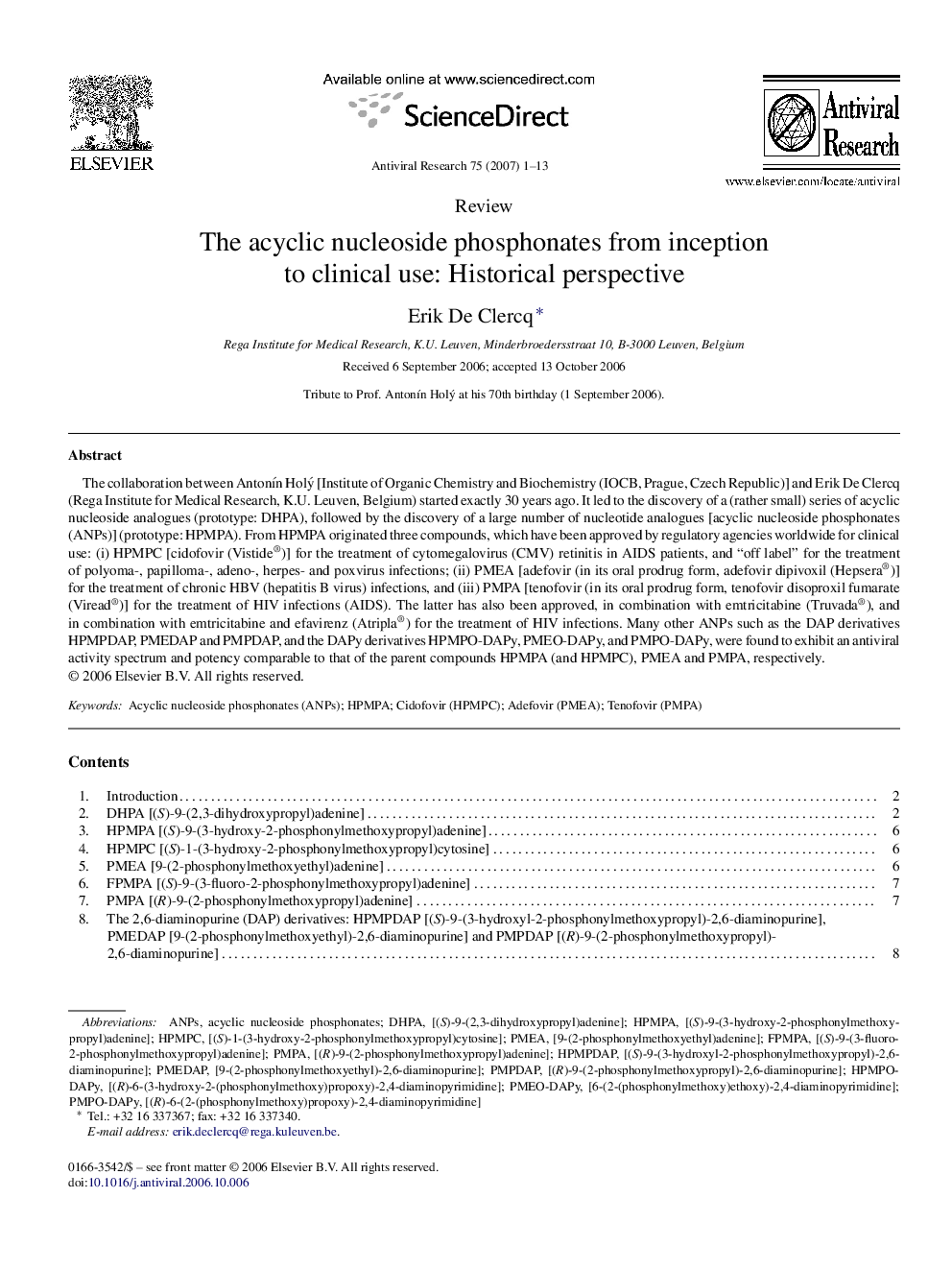| کد مقاله | کد نشریه | سال انتشار | مقاله انگلیسی | نسخه تمام متن |
|---|---|---|---|---|
| 2511275 | 1118011 | 2007 | 13 صفحه PDF | دانلود رایگان |

The collaboration between Antonín Holý [Institute of Organic Chemistry and Biochemistry (IOCB, Prague, Czech Republic)] and Erik De Clercq (Rega Institute for Medical Research, K.U. Leuven, Belgium) started exactly 30 years ago. It led to the discovery of a (rather small) series of acyclic nucleoside analogues (prototype: DHPA), followed by the discovery of a large number of nucleotide analogues [acyclic nucleoside phosphonates (ANPs)] (prototype: HPMPA). From HPMPA originated three compounds, which have been approved by regulatory agencies worldwide for clinical use: (i) HPMPC [cidofovir (Vistide®)] for the treatment of cytomegalovirus (CMV) retinitis in AIDS patients, and “off label” for the treatment of polyoma-, papilloma-, adeno-, herpes- and poxvirus infections; (ii) PMEA [adefovir (in its oral prodrug form, adefovir dipivoxil (Hepsera®)] for the treatment of chronic HBV (hepatitis B virus) infections, and (iii) PMPA [tenofovir (in its oral prodrug form, tenofovir disoproxil fumarate (Viread®)] for the treatment of HIV infections (AIDS). The latter has also been approved, in combination with emtricitabine (Truvada®), and in combination with emtricitabine and efavirenz (Atripla®) for the treatment of HIV infections. Many other ANPs such as the DAP derivatives HPMPDAP, PMEDAP and PMPDAP, and the DAPy derivatives HPMPO-DAPy, PMEO-DAPy, and PMPO-DAPy, were found to exhibit an antiviral activity spectrum and potency comparable to that of the parent compounds HPMPA (and HPMPC), PMEA and PMPA, respectively.
Journal: Antiviral Research - Volume 75, Issue 1, July 2007, Pages 1–13